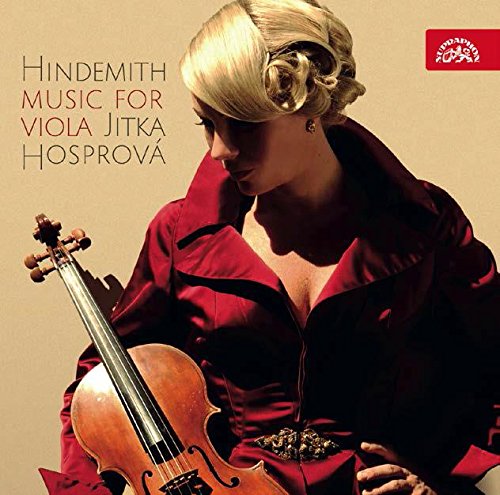HINDEMITH Viola Works
View record and artist detailsRecord and Artist Details
Composer or Director: Paul Hindemith
Genre:
Chamber
Label: Supraphon
Magazine Review Date: 10/2014
Media Format: CD or Download
Media Runtime: 61
Mastering:
DDD
Catalogue Number: SU4147-2

Tracks:
| Composition | Artist Credit |
|---|---|
| Sonata for Viola and Piano |
Paul Hindemith, Composer
Jitka Cechová, Piano Jitka Hosprová, Viola Paul Hindemith, Composer |
| Sonata for Viola |
Paul Hindemith, Composer
Jitka Hosprová, Viola Paul Hindemith, Composer |
| Trauermusik |
Paul Hindemith, Composer
Jitka Hosprová, Viola Paul Hindemith, Composer Prague Chamber Orchestra |
Author: Guy Rickards
Where, then, do these new recordings fit in? Both players cherry-pick their sonatas, covering the three with piano between them but only the first two unaccompanied ones. Both include extras: the Trauermusik (1936), nicely played by Hosprová, while Sanzó and Paciariello feature the ‘Meditation’, extracted in arrangement by the composer from the ballet Nobilissima visione and, more importantly, the Sonata for viola d’amore, Op 25 No 2, omitted from previous surveys. Full marks to Sanzó and Paciariello for initiative and providing a strong account of this little-known piece, for the composition of which Hindemith learnt to play the instrument in three months in 1922. (He later wrote other pieces for it, including the Sixth Kammermusik concerto.)
The performances all round are very strong, Hosprová and Sanzó both close to the front rank of interpreters. Neither supplants Zimmermann but they do display a sympathy with Hindemith’s writing and, needless to say, the necessary virtuosity to deal with the challenges this music sets. Hosprová’s playing has a nimbleness and lightness of tone, yet with plenty of ‘body’, that is very attractive. Her account of Op 11 No 4 is very fine indeed, keeping the lyrical and the excitable elements in perfect balance. Sanzó’s tone is darker, weightier in the lower registers but a touch thin in the higher ones. In the iconoclastic earlier sonatas this fits the music nicely; in the C major Sonata (1939) it is less comfortable.
These, however, are niggles. One could do a lot worse than these very well-recorded accounts. There is little to choose between Hosprová and Sanzó technically and the differential is really a matter of personal taste regarding their playing tone; I marginally prefer Hosprová’s. Let’s hope they complete full surveys, as the surveys by Kashkashian, Imai and Power have an advantage in terms of repertoire, although Sanzó’s inclusion of the Viola d’amore Sonata does complicate matters.
Discover the world's largest classical music catalogue with Presto Music.

Gramophone Digital Club
- Digital Edition
- Digital Archive
- Reviews Database
- Full website access
From £8.75 / month
Subscribe
Gramophone Full Club
- Print Edition
- Digital Edition
- Digital Archive
- Reviews Database
- Full website access
From £11.00 / month
Subscribe
If you are a library, university or other organisation that would be interested in an institutional subscription to Gramophone please click here for further information.




